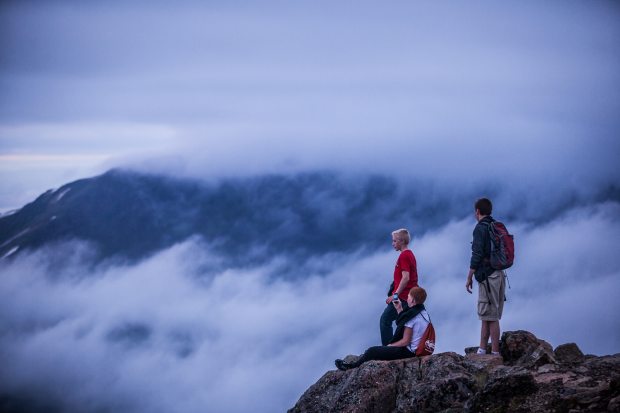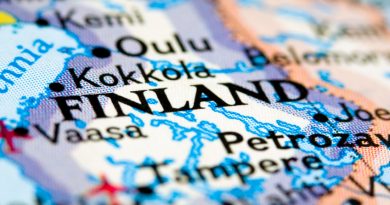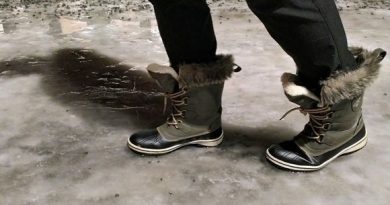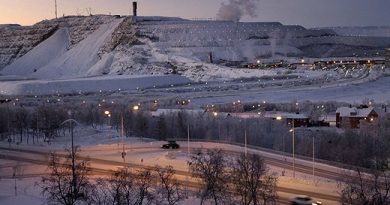Alaska’s Flattop Mountain: Popular, treacherous, or both?

Three hikers have been rescued in as many weeks from the trail up Anchorage, Alaska’s popular Flattop Mountain, which over the years has claimed the lives of a handful of hikers, climbers and runners. Even experienced hikers have been gravely injured.
Is the trail dangerous, or are statistics mainly indicative of its popularity?
On Saturday, Anchorage resident Brian Patrick O’Quinn, 41, was medevaced off the mountain due to a sprained ankle and head injury. The week before, Australian Stefan Von Mergle-Frote, 33, was medevaced after he became stranded near the top and twisted his ankle. And the week before that, 23-year-old Mputu Nzaai of Germany was medevaced off the mountain on June 8 after twisting her ankle while glissading down the mountain in the snow.
And summer is just getting started.
Flattop is billed as the “most often climbed peak in Alaska” by the Alaska Department of Natural Resources. The flat summit is 1.7 miles from the Glen Alps parking lot, where most climbs begin. Hikers climb 1,300 feet to the top, where a 360-degree view of Anchorage, Cook Inlet and surrounding mountains awaits.
Over the last 10 years, some 135,000 people have visited Flattop, said Chugach State Park superintendent Tom Harrison, and that’s a conservative estimate. “I suspect it’s on the low side,” he said.
“If you know what you’re in for, [the hike is] no big deal,” Harrison said. But for people in flip flops and a T-shirt, it may be more than they expected.
At least seven people have been rescued off of Flattop this year, but there may be more that cannot be searched in the Alaska State Troopers database, allowed spokeswoman Megan Peters.
Troopers are responsible for all land-based search and rescue. After fielding calls for rescue, troopers either contact the volunteer-based Alaska Mountain Rescue Group or Lifemed Alaska’s medevac helicopter — or both — for assistance.
Lifemed Alaska will dispatch its helicopter from either its Wolf Lake base in Palmer or another base in Soldotna to retrieve stranded hikers. Prices for a medical evacuation vary, but Lifemed’s typical payment for a Flattop medevac is $7,900 per flight. Lifemed spokeswoman Cheryl Zernia stressed that none of that money comes from taxpayers, and is all paid for by insurance or the individual.
Peters said that the trail’s overwhelming popularity is the reason behind the rescue calls.
“We’ve seen everything from sprained ankles to head injuries,” Peters said. And then, of course, are the glissaders, who use the snow-covered hillsides as a makeshift slide.
Last year, three people who slid down Flattop became stranded in 8-to-10-foot crevasses in the snow, said Bill Romberg of the Alaska Mountain Rescue Group (AMRG). “Sometimes people make decisions they regret later,” Romberg said.
His organization is regularly called out to Flattop by the troopers, and Romberg estimated there had been about a dozen rescues in the last two years. Rescue calls off Flattop are “pretty routine,” he said. “We know it’s going to happen every year.”
Hikers have perished on the popular peak.
Five people have died on the Flattop trail since the 1970s, according to a local database, due to falls, exposure and avalanches. At least one other hiker not included in the list, Brian Mulvehill, died on Flattop in 2006 due to an avalanche. Five others have perished on Peak 3, located south of Flattop, and Ptarmigan Peak, which also can be accessed by the Glen Alps trailhead.
But fatal accidents are rare, Chugach State Park ranger Tom Crockett said. “You can’t go by the horror stories – most people don’t have a problem.”
Still, “anyone who does set foot on the mountain should treat it like it’s a real mountain and not a carnival attraction.” That means decent footwear, appropriate clothing and water.
Gauging the difficulty of a hike can be a challenge, as there’s no national rating standard. While Flattop can be steep with it’s own set of challenges, “by Alaska standards, it’s pretty darn good,” Harrison said. It’s not muddy and is well maintained compared to many other trails.
Harrison pointed out that Flattop’s “moderate to difficult” rating on a state trail guide leaves it open to subjective interpretation. He terms it an “easy mountain hike with some exposure,” meaning that some areas are steep and people need to be careful of missteps.
Still, Crockett has had to turn around on the mountain when the weather soured while hiking with family visiting from the Lower 48. “I didn’t want to be remembered as the park ranger who led his southern relatives to disaster,” he said.
Flattop’s new parking lot, which is open during the daytime, should relieve crowds at the old parking lot and allow more people to hike the trail, Harrison said. He believes that the trail’s popularity has only increased over time.
Harrison and Crockett agree that the trail’s easy accessibility make it a prime choice for residents and visitors alike looking to spend a few hours in the backcountry.
“Just because it’s close to town doesn’t mean you can’t have an accident,” Romberg said.
Flattop by no means stands alone as a search and rescue hot spot in Alaska. Other frequented rescue locations are Harding Lake, south of Fairbanks, and the hiking trails around Juneau. In the winter, Hatcher Pass and Petersville are hotspots for rescue calls. And during hunting season, the Denali Highway lights up with rescues. Basically, Peters said, it comes down to “anywhere people congregate.”
“It’s Alaska – we see a lot of stuff go wrong.”
Contact Laurel Andrews at laurel(at)alaskadispatch.com



